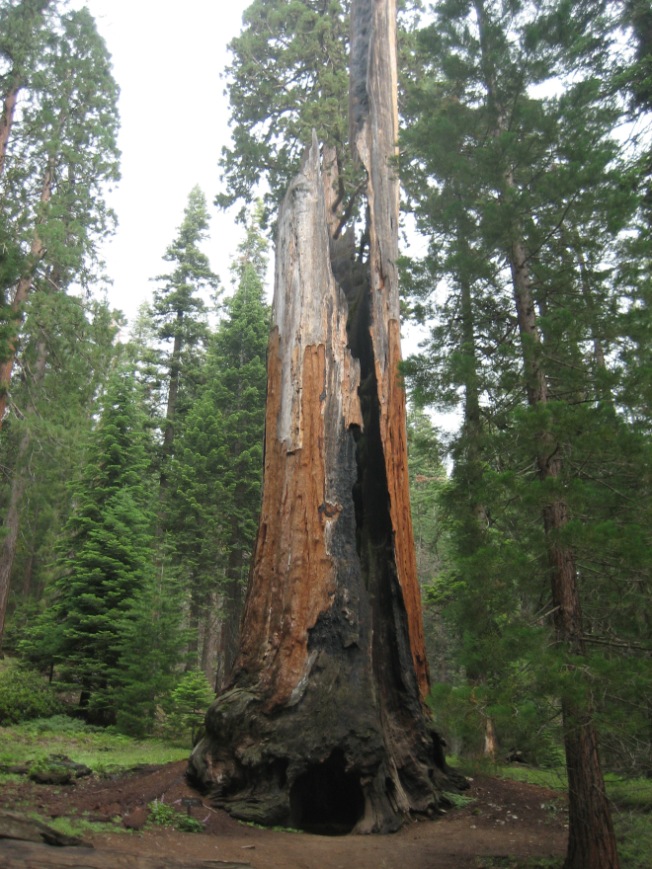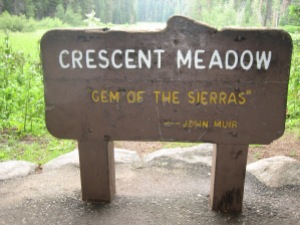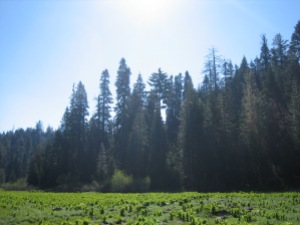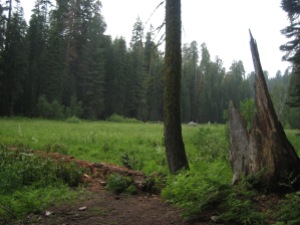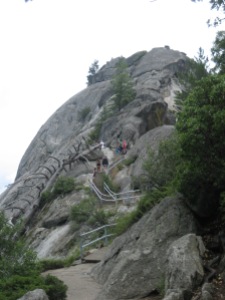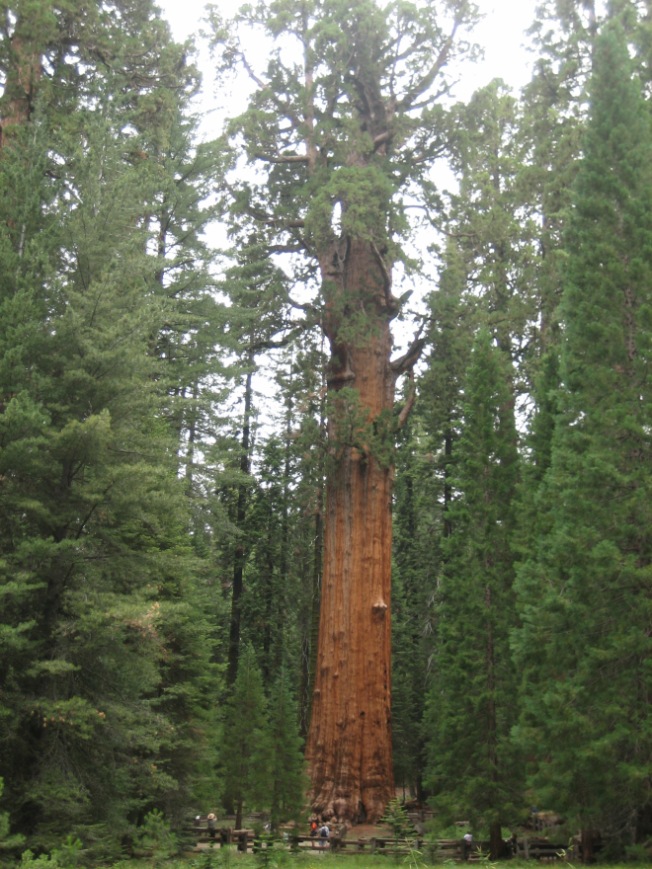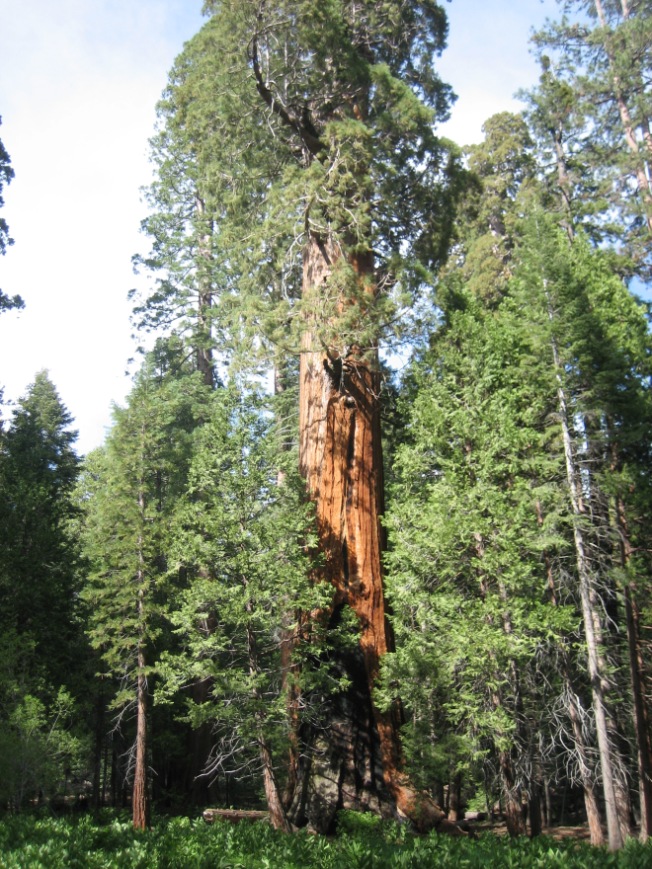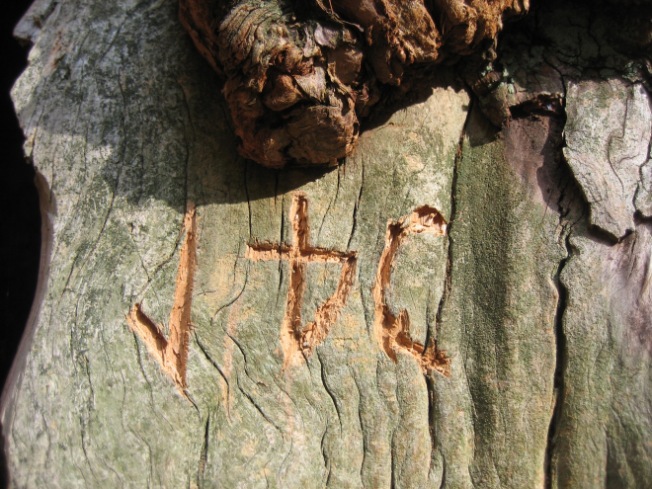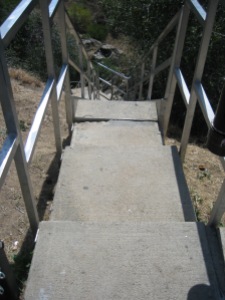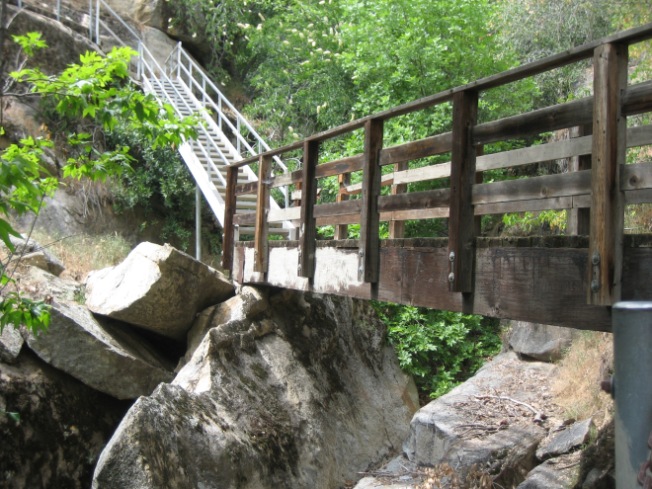This is Moro Rock, and I climbed it!
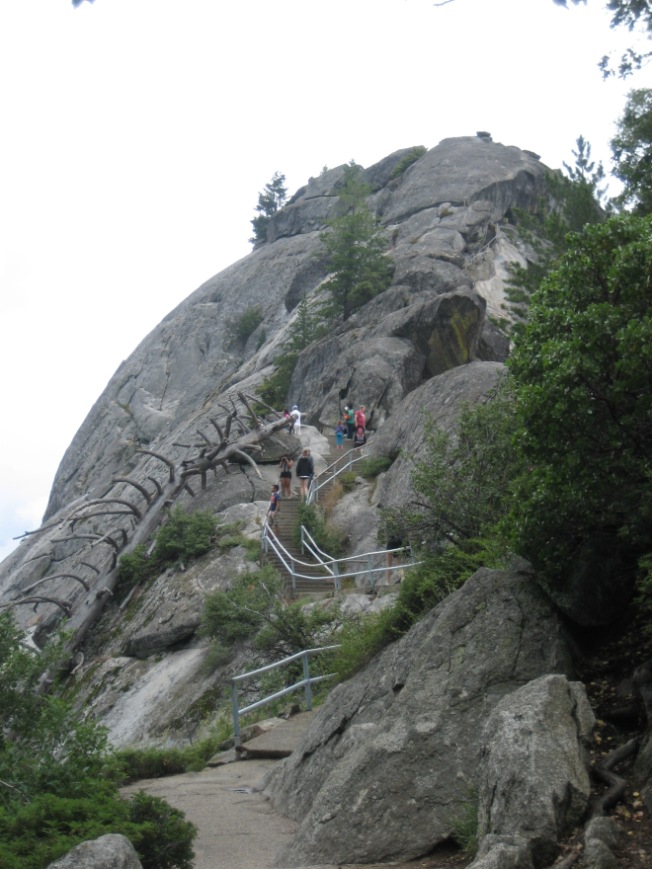
Moro Rock is in the middle of the Sequoia National Park, near Crescent Meadow. As the shuttle bus I was riding in approached the park from the south on the General’s Highway, we could see Moro Rock towering above everything.
I’d never heard of Moro Rock before I started researching my trip to Sequoia National Park. In my research, I learned the rock is there, it’s big, and people climb it. Since it was in the part of the park I’d be in and it was one of the things to see (and on a shuttle route), I decided I should get a look at it. I didn’t decide to climb it until I was in the park. Why not? I thought. I’m here. I should do it.
According to https://en.wikipedia.org/wiki/Moro_Rock,
Moro Rock is a dome-shaped granite monolith. Common in the Sierra Nevada, these domes form by exfoliation, the spalling or casting off in scales, plates, or sheets of rock layers on otherwise unjointed granite. Outward expansion of the granite results in exfoliations. Expansion results from load relief; when the overburden that once capped the granite has eroded away, the source of compression is removed and the granite slowly expands. Fractures that form during exfoliation tend to cut corners. This ultimately results in rounded dome-like forms.[6]
The climb up Moro Rock includes over 350 steps on a railed staircase. According to the Moro Rock Wikipedia entry, the
stairway, designed by the National Park Service and built in the 1930s by the Civilian Conservation Corps, is cut into and poured onto the rock, so that visitors can hike to the top..[T]he…stairway adopted a design policy of blending with the natural surfaces to the greatest extent possible. The 797-foot-long stairway was designed by National Park Service landscape architect Merel S. Sager and engineer Frank Diehl, following natural ledges and crevices.
In some places with a less steep incline, there are no steps. The hike up Moro Rock covers 1/4 mile, and there is a 300 feet increase in elevation from bottom to top.
I’m in better physical condition than I was at the start of the summer, but I’m not necessarily in great shape for climbing large chunks of granite. Also, since I didn’t have a safe place to leave my laptop, I was lugging it around in my backpack. It would have been an easier climb without that weight on my shoulders.
The sky was overcast when I arrived at Moro Rock, and I appreciated not having the sun beating down on my head. However, there are warnings at the bottom of the rock saying it is a bad idea to do the hike if there are dark clouds in the sky. People have died after being struck by lightning on Moro Rock. I decided to make the climb anyway, justifying my actions because
#1 I was already there, and I didn’t know when or if I would be there again
#2 the dark clouds were over there and not directly over the rock
#3 I saw no bolts of lighting in the sky
#4 (the ever popular) lots of other people were doing it.
I took the climbing slow and stopped to rest as often as I needed to. There were many spots with amazing views, so I was able to see lovely scenery and take many photos while I was resting.

A view from Moro Rock of the twisty, turny General’s Highway.
There were also several informational boards to read along the way. I stopped to read them all while catching my breath.

A rock formation below Moro Rock.
In some places, the path was very narrow, with room for only one person to pass through. Many other hikers just pushed pass me, even if they had room to step aside and let me through first. Also, groups of four, five, eight people often plowed right past me, even though it would have been more sensible to let the single person (me!) pass first. Most people seemed to be in a big hurry, first to get to the top, then to get off the rock. (Maybe everyone was worried about lightning.)

A photo I took during one of my rests.
The view from the top was amazing, even with clouds covering the mountains.
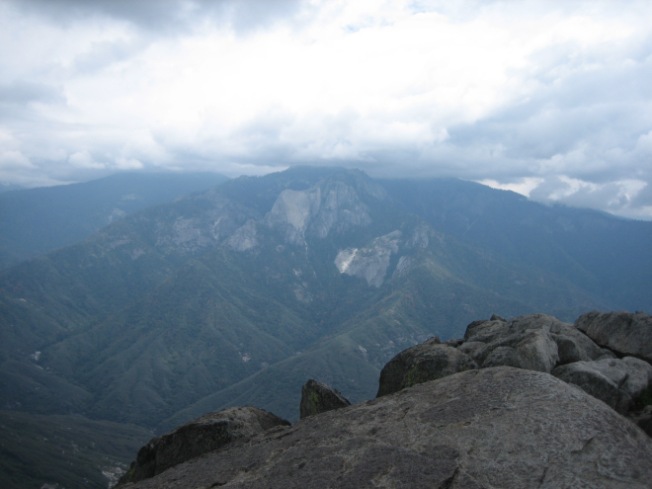
This is the view from the top of Moro Rock, taken as far out as I could get without crossing the barrier. Unlike my father, I don’t feel the need to cross barriers obviously put there to protect my safety.
Again, my photos and words don’t do justice to the awesomeness of the natural world.
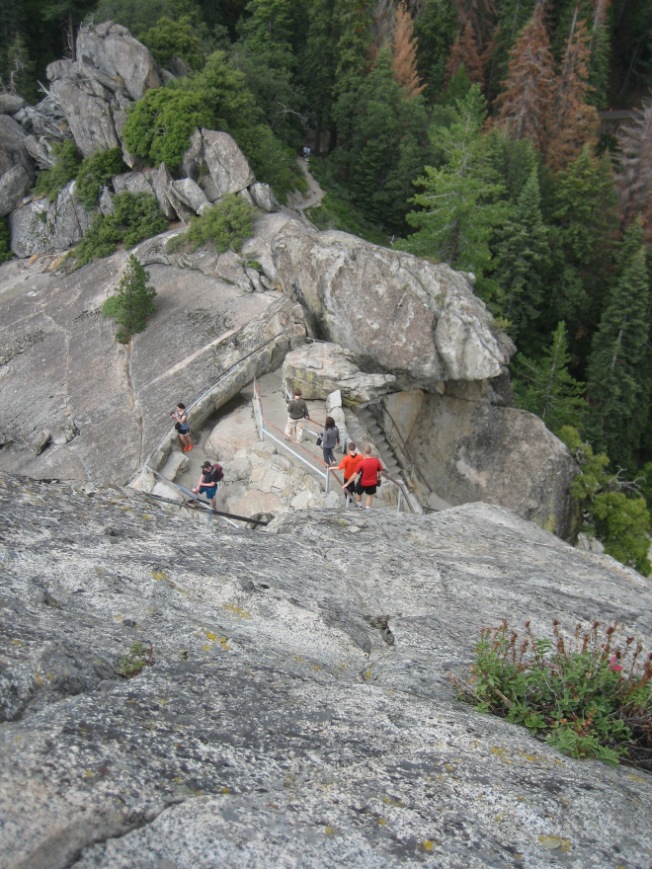
Looking down on Moro Rock. There’s a good view of the stairs on the right.
I’m proud of myself for making it to the top. In the grand scheme of outdoor activities, climbing Moro Rock probably isn’t all that impressive. But for me (a bookworm and an “inside kid”), it was quite an achievement.
When I got back to the base of the rock to wait for the shuttle to take me to nearby Crescent Meadow, the muscles in my thighs were trembling. A week later, I could still feel the ache in the muscles of my hips and butt.
I took all the photos in this post.


